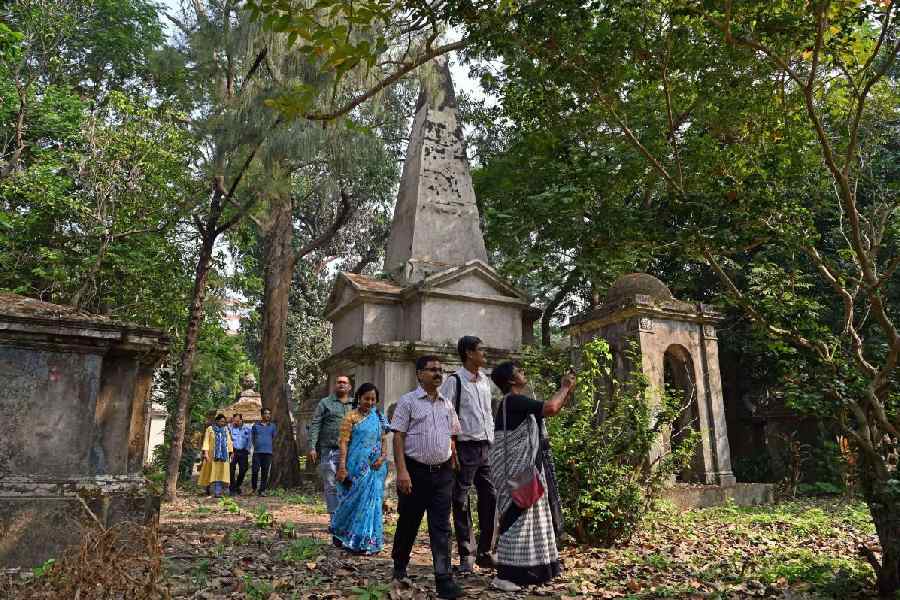The 300-odd trees at South Park Street Cemetery provide a green relief in the heart of a city with poor air quality but the roots of the trees diving deep underneath the tombs also pose a threat to some of the historic structures.
The custodians of the cemetery are now trying to get to the root of the problem, literally. Their mission: to preserve the tombs “as it is” in the cemetery established in 1767.
The South Park Street Cemetery, with 1,600 tombs, exhibits a “cross-section of various civilisations across the globe ranging a time span of more than 3,500 years”.
“These were built by the masons and master craftsmen of Bengal under the guidance of European architects at a time when Kolkata was considered the second city in the British empire,” writes Ranajoy Bose, honorary executive member, Christian Burial Board, Kolkata, in an introduction at the entrance to the cemetery.
Spread across 21 acres, the cemetery has the tombs of poet, educator and principal of Hindu College Henry V.L. Derozio, Asiatic Society founder William Jones and Major General Charles Stewart, among others.
On Saturday, the Christian Burial Board, in association with a foundation that works on cultural heritage preservation, organised a guided tour and a discussion on how to attract more footfall to the cemetery that has visitors from Europe, Australia and several parts of Asia each year.
“The trees in the cemetery benefit everyone who otherwise lives in a concrete jungle,” said Bose.
“But the tombs have a limited foundation and chances are, they can be toppled from below by the roots... We are trying to arrest the roots from penetrating underneath the tombs... Till now, they are not in a precarious position. We have to preserve the tombs, the trees and the bird life that is supported by the trees,” Bose told The Telegraph.
Saturday was the culmination of the World Heritage Week (November 19 to 25).
The Christian Burial Board, with help from the Chennai-based Reach Foundation, is restoring the tombs.
Surajit Maiti, former director (science), Archaeological Survey of India, and principal coordinator, Reach Foundation, Kolkata branch, said: “The roots go to the foundations and crack them. So we have to arrest the roots from moving towards the foundation of the tombs... Like other monuments you cannot transplant a tomb from one place to another.”
“When a structure is declared heritage, it means one is only the caretaker and not the owner. It belonged to our forefathers and it has to be handed over to the next generation. It has to be preserved as it is... maintained with all original building fabrics where it differs from ordinary repair,” said Tapan Bhattacharya, who retired from ASI and is now secretary, Reach Foundation, Kolkata.
“The cemetery has a footfall of 300 to 400 people a day during winter. We have tourists from Europe, Australia, America, Japan, Korea,” said Bose.
“Government aid and corporate sponsorships would benefit the cemetery and help attract more visitors from the city. Maybe a light and sound show would make it interesting. Every tomb here has a story to tell.”






